Figure represents a square carrying changes +q,+q,−q,−q at its four corners as shown. Then the potential will be zero at points

A, B, C, P and Q
A, B and C
A, P, C and Q
P, B and Q
The correct Answer is:B
Step by step video, text & image solution for Figure represents a square carrying changes +q,+q,-q,-q at its four corners as shown. Then the potential will be zero at points by Physics experts to help you in doubts & scoring excellent marks in Class 11 exams.
Updated on:21/07/2023Topper's Solved these Questions
- ELECTROSTATICSBOOK - DC PANDEYCHAPTER - ELECTROSTATICSEXERCISE - JEE Advanced
44 Videos
- ELECTROSTATICSBOOK - DC PANDEYCHAPTER - ELECTROSTATICSEXERCISE - Comprehension
36 Videos
- ELASTICITYBOOK - DC PANDEYCHAPTER - ELASTICITYEXERCISE - Medical entrances s gallery
21 Videos
- EXPERIMENTSBOOK - DC PANDEYCHAPTER - EXPERIMENTSEXERCISE - Subjective
15 Videos
Similar Questions
Four identical point charges q are placed at four corners of a square of side a. Find the potential energy of the charge system.
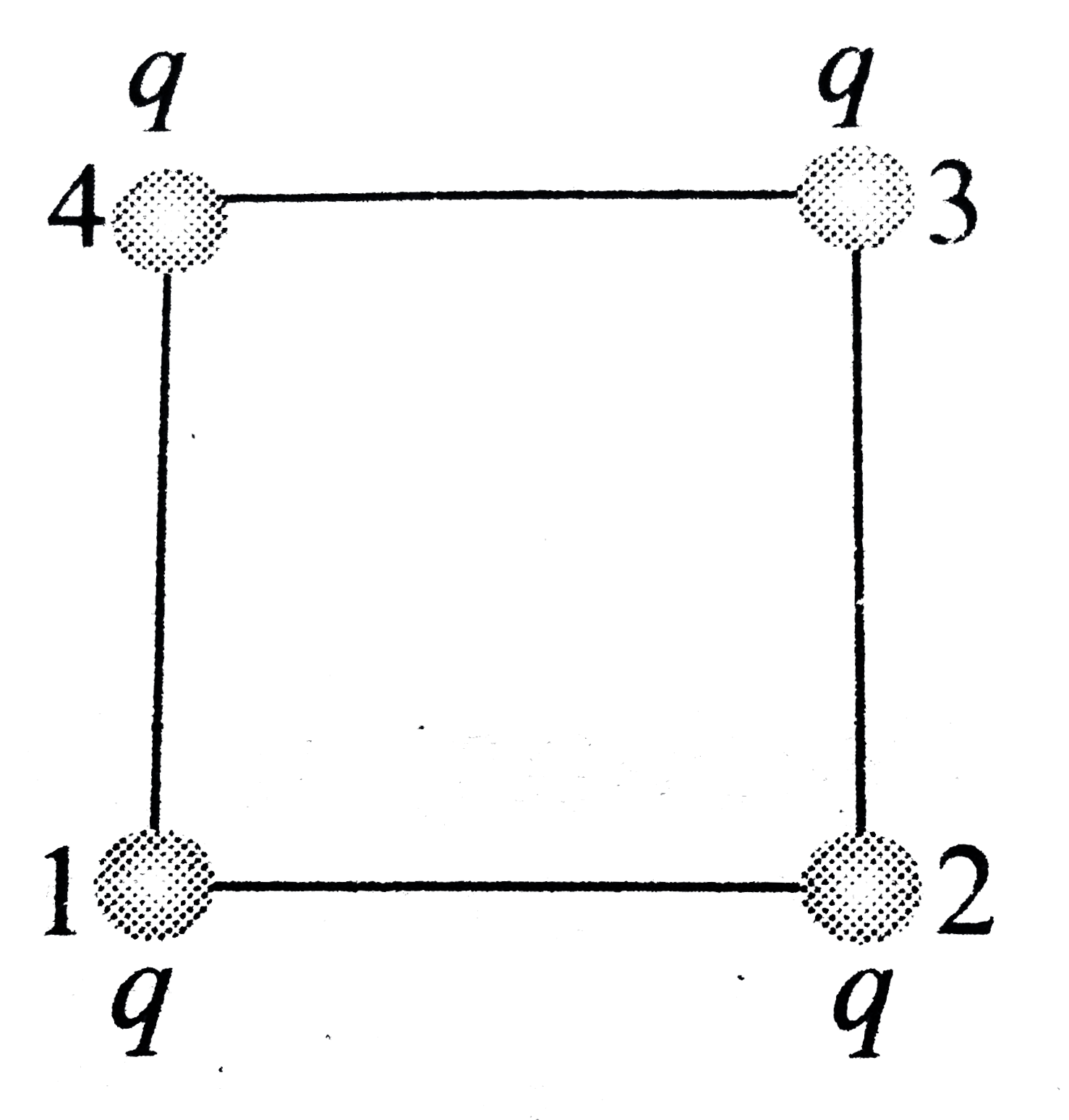 .
.
View SolutionA system consists of charges +q and +q at the opposite corners of a square of sides 2a and −q and −q at the other two corners . Calculate the potential and field at a distance r from the centre of the square along a line parallel to the two sides of the square . Assume a <<r .
View Solution
Knowledge Check
Four charges Q-Q, Q-Q are placed at the corners of a square as shown . The potential is zero at points
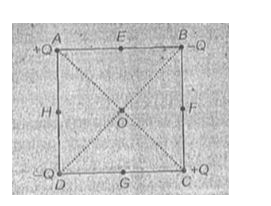 AE,F,G,H,OBE,O,G onlyCH,O,F onlyDO only
AE,F,G,H,OBE,O,G onlyCH,O,F onlyDO onlyFour electric charges +q,+q,−q and −q are placed at the corners of a square of side 2L (see figure). The electric potential at point A, mid-way between the two charges +q and +q, is
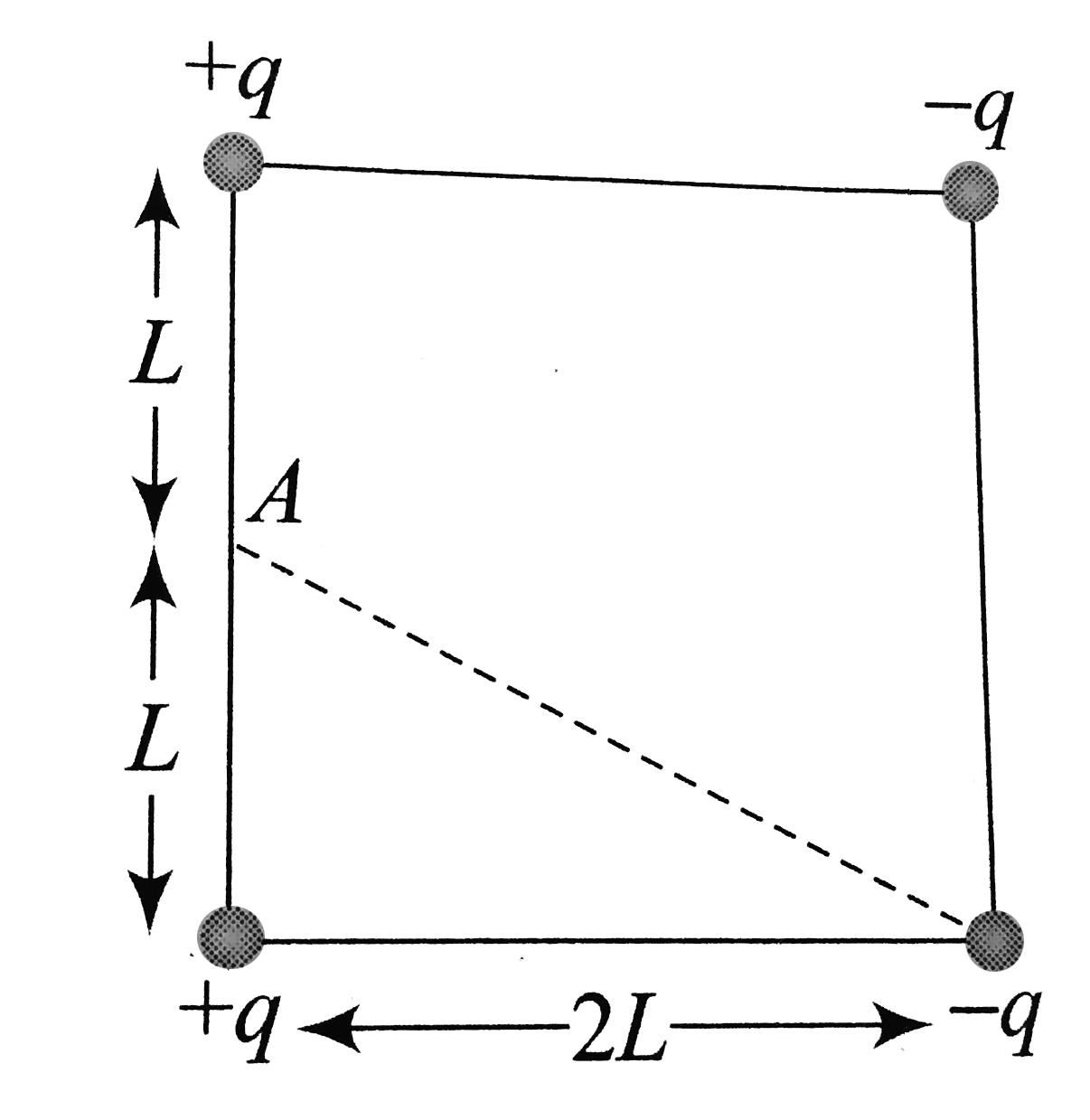 A14πε02LL(1+1√5)B14πε02LL(1−1√5)CzeroD14πε02LL(1+√5)
A14πε02LL(1+1√5)B14πε02LL(1−1√5)CzeroD14πε02LL(1+√5)Three charges +q, +q, +2q are arranged as shown in figure. What is the field at point P (center of side AC)
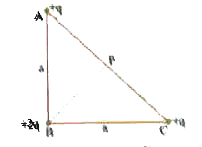 AE=qπε0a2BE=q2πε0a2CE=q3πε0a2DE=q4πε0a2
AE=qπε0a2BE=q2πε0a2CE=q3πε0a2DE=q4πε0a2
Two equal point charges Q=+√2μC are placed at each of the two opposite corners of a square and equal point charges q at each of the other two corners. What must be the value of q so that the resultant force on Q is zero?
View SolutionFour point charges Q , q Q and q are placed at the corners of a square of side 'a' as shown in the Fig. Find the
potential energy of this system .
View SolutionThere is a, and four charges +q, +q, -q and -q are fixed at the four corners of square. See the figure for the placement of charges.
Calculate:
(i) Electric potential at point O.
(ii) Work done to move a charge +e from point O to point B.
(iii) Work done to move a charge +e from point O to A.
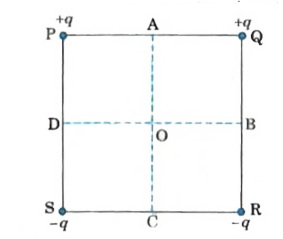
View SolutionIt is requird to hold four equal point charges +q in equilibrium at the corners of a square. Find the point charge that will do this, if placed at the centre of the square.
View SolutionFour electric charges +q,+q,−q and −q are placed at the corners of a square of side 2L (see figure). The electric potential at point A, mid-way between the two charges +q and +q, is

View Solution
